WP_Post Object
(
[ID] => 8496
[post_author] => 20
[post_date] => 2024-10-16 10:02:25
[post_date_gmt] => 2024-10-16 16:02:25
[post_content] =>
Did you know that The Owl (a.k.a. Lazy Owl) predates the University of Regina? When it opened in 1967 in the original student union building on the University of Saskatchewan, Regina Campus, the institution and the times were very different.
It wasn't until 1983 that The Owl was able to secure full time liquor license, recalls Mike Burns BA'92, The Owl's manager at the time. Burns and fellow Owl manager Alexis Losie BA'09 spoke with Degrees to jog our memories and share a bit of The Owl's live music history with us.
Mike Burns BA'92 has memories of first sneaking into The Owl as a high schooler in the mid-1970s to see bands like Chilliwack and Streetheart. "There was a lot of raunchiness," he says.
"D.O.A. and The Extroverts did a show for us in the summer of 1981. It was a Monday night. Tickets were $2. It was pretty successful," Burns says. "Then D.O.A. left their vehicle at our place and flew back to Vancouver to open for The Clash the next night."
"I'd say 'I need a band'. They'd have a week to get eight songs together. One was Colin James' first band. So there was some encouragement."
Burns - renowned locally as Regina's original punk rock impresario - had a couple of contacts in the industry, and in his three years as manager booked some memorable shows. Highlights for him include Queen Ida ("an amazing eight-piece zydeco band from New Orleans"), The Shakin' Pyramids from Scotland ("just as good as The Stray Cats but could never break out") and Klaatu ("everyone thought they were The Beatles.")
A 1982 Simple Minds show tops them all though. "Everyone was six inches off the floor. You knew immediately they were such a cool band," says Burns. "They weren't big yet, but when they got home, New Music Express did a cover story that said 'Simple Minds Lost in the Hinterlands'. -But they were just doing what kids do, playing in different places, and not making a lot of money, but they did it."
For warm-up duties, Burns would often recruit young musicians in Regina. "I'd say 'I need a band'. They'd have a week to get eight songs together. One was Colin James' first band. So there was some encouragement."
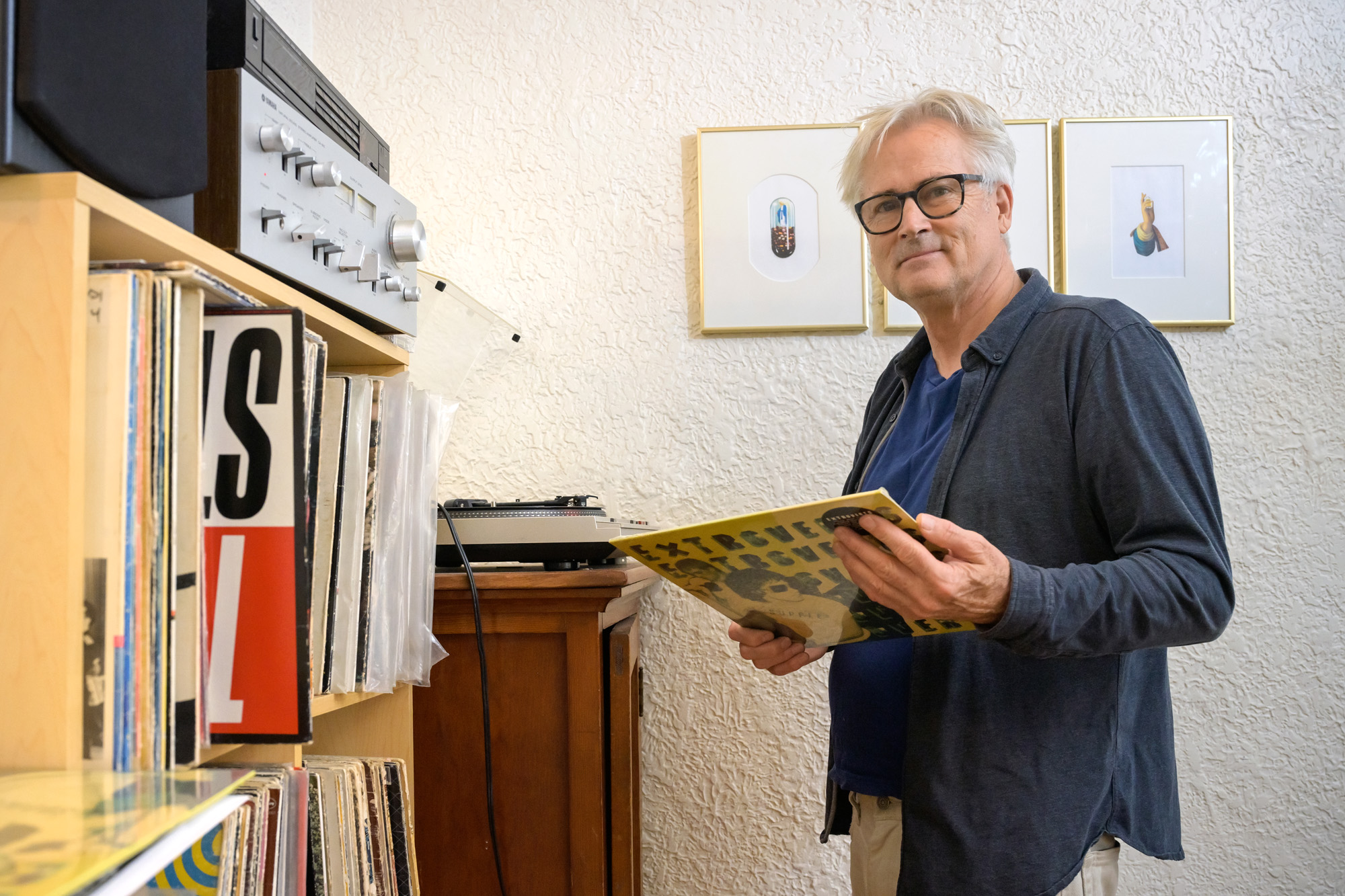
Mike Burns BA'92. Photo: Trevor Hopkin, U of R Photography
Folk-influenced Friday afternoon shows were a popular draw. Don Freed and Sneezy Waters (who covered Hank Williams) are two folks band Burns recalls. He touts the Education Auditorium as a forgotten gem where Hamilton, Ontario's Teenage Head mounted a marathon show there in 1981. Around that time, says Burns, "They also brought in a bunch of old Blues guys like Muddy Waters [see sidebar], Lightnin' Hopkins, Sonny Terry, and Brownie McGhee. It was pretty awesome," Burns recalls.
In the 90s, The Owl continued to host acts brought in by local promoters: Kingston, Ontario's The Inbreds, Halifax's Jale, and Montréal's The Doughboys all graced The Owl's stage to enthusiastic crowds. Among the acts that would go on to make it big were Green Day - a show manager Alexis Losie remembers well. "It was something like a $7 to $10 ticket, so very affordable," she says. This was July 1993. Green Day was a name in the L.A. punk scene, and mere months away from blowing up worldwide with Dookie.
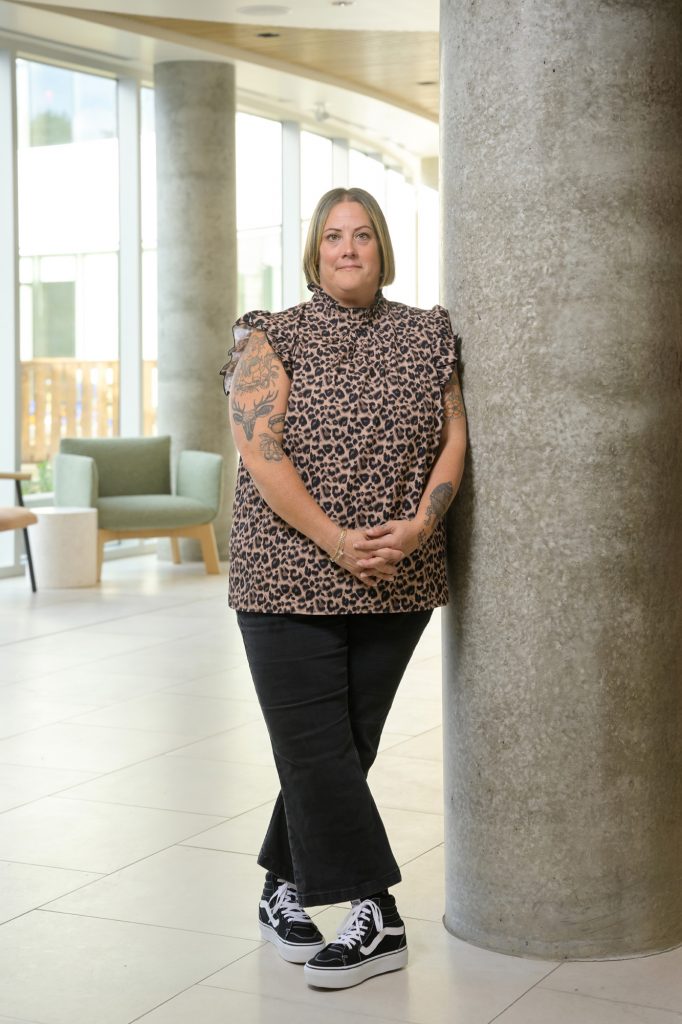
Alexis Losie BA'09. Photo: Trevor Hopkin, U of R Photograhy
Losie had just graduated from high school, and later as a U of R student, became an Owl regular. When The Owl moved into Riddell Centre in 1997, Brent Caron hired and trained her to work in the new bar. Eventually, she succeeded him, managing the Owl until 2014.
When designing Owl 2.0, live music was a priority, says Losie. "There was a full lighting rig and a sound system so big it caused noise complaints in the rest of the building. Both The Owl and Multi-Purpose Room hosted shows."
Shows by Toronto's Joydrop (fronted by Tara Sloane) and Vancouver's Spirit of the West played the Multi-Purpose Room. It was a good arrangement, says Losie. "We worked closely with local promoters. We would provide the space and help with some of the greenroom requirements, then The Owl would benefit from increased bar sales."
Hamilton troubadour B.A. Johnston, Vancouver folk quartet Po' Girl, and Regina indie artist Andy Shauf are three artists Losie booked during her tenure. "We were a JUNO venue in 2013 too, which brought in some incredible acts. We also supported local bands like Library Voices and Rah Rah (Ed note: band member Marshall Burns BA'15 is Mike's son). I always wanted to make a home for local bands during busier times of the year, like Welcome Week. We hosted some of The Dead South's first shows too. It didn't take long before they were filling The Owl -and they've gone on to play Glastonbury."
Did the Multi-Purpose Room have the best acoustics? "Probably not," Losie says. "But we did have the equipment to do the best we could."
While the old Owl's sound was, by many accounts, "the worst", it was always fun, says Burns. "Nobody will ever forget the beer bottles pounding on the table for the encore. I've never seen that anywhere else. I look back on that time very fondly. Obviously, it was our time. So, it seems important. But it was a vibrant time in music, and it led to the next 20 years, where live indie music became a thing. But The Owl was indie before there was indie."
"It was a vibrant time in music, and it led to the next 20 years, where live indie music became a thing. But The Owl was indie before there was indie."
Hits and Misses...
For Mike Burns, Muddy Waters was another Lazy Owl highlight. "It was just a year before he died [in 1983]. I had my dad's car and arranged to meet him at the airport, but when I went to start it, the battery was dead. It was wintertime. I had a 1971 Galaxie 500. The seats were torn, so I went to Canadian Tire and got new seat covers and cleaned it up. When I went to the airport, I said, 'Sorry I have to pick you up in this. I had a nice car arranged,bbut I'm afraid you're riding in my $200 car.' And Muddy Waters was like, 'Whoa, you only paid $200 for this? This is a great car!'"
Alexis Losie shared one funny story from her time at The Owl. "We would often give my cell number to the band manager in case they needed anything and couldn't find me. One morning, I got a call after a big show the night before [possibly Dropkick Murphys, as the band was from Boston she remembers, and had a bagpipe player]. The tour bus had left without the manager. I was the only number he had in Regina, and everyone on the bus was sleeping. We were an hour and a half behind, so we got in the car, hoping we wouldn't have to go all the way to Winnipeg."
Top image: Collage of Lazy Owl concert flyers courtesy of Mike Burns BA'92, and used with permission.
Get tickets to Howl at the Owl on Saturday, October 26!
The 90s may be a speck in the rear-view mirror, but if you're feeling nostalgic this Alumni Week, The Owl is the place to be for a 90s-themed party: Howl at the Owl with live music on Saturday, October 26. Tickets are available now.
[post_title] => Reelin’ In The Years: Five decades of live music give The Owl reason to howl
[post_excerpt] =>
[post_status] => publish
[comment_status] => open
[ping_status] => open
[post_password] =>
[post_name] => reelin-in-the-years-lazy-owl
[to_ping] =>
[pinged] =>
[post_modified] => 2025-01-03 11:36:10
[post_modified_gmt] => 2025-01-03 17:36:10
[post_content_filtered] =>
[post_parent] => 0
[guid] => https://www.degreesmagazine.ca/?p=8496
[menu_order] => 0
[post_type] => post
[post_mime_type] =>
[comment_count] => 0
[filter] => raw
)
WP_Post Object
(
[ID] => 8600
[post_author] => 20
[post_date] => 2024-10-17 09:23:06
[post_date_gmt] => 2024-10-17 15:23:06
[post_content] =>
When you walk into the MacKenzie Art Gallery exhibition, Whispers from the Vault, you're greeted by three ceramic sculptures by Joe Fafard: a Ted Godwin bust, a Jack Sures bust, and a full-length portrait of art historian Maija Bismanis. "I call that section, 'Meet My Professors'. It sums up concisely my schooling at the University of Regina and what I received from my professors there," says Timothy Long, head curator at the MacKenzie. Whispers is the final exhibition Long curated before his retirement in fall 2024. The show, which runs until June 16, 2025, is drawn solely from the gallery's Permanent Collection, on which Long has become the definitive expert over the 35 years he's worked there. "People kept asking me if [the works in the show] are my favourite works from the vault. I said, 'No. These are my favourite stories connected to works from the vault,'" he remarks. Those three U of R professors had a profound impact on Long's extensive career as a curator, and he has stories about all of them.
In the eight years he spent doing his undergraduate studies at the University-"I went through at a leisurely pace"-Long took numerous classes in the art department. He recalls, "Ted Godwin was an imposing personality at the time. But more than making art, I think I learned from him about storytelling in relation to art." Godwin, a member of the Regina Five, would reference interactions with artists like Clement Greenberg and Barnett Newman, who led the influential Emma Lake Artists' Workshops in 1959 and 1962, respectively. "There was a pleasure in listening to the stories," Long remembers, going on to note the contrast in Godwin's personality: "If you confronted him with other things or challenged him, you could get in a good argument with him. He could be loud. But I appreciated his kind of storytelling."
Long took one class from internationally acclaimed ceramist Sures-in drawing. "I was too afraid to take ceramics from him. You had to work too hard," he laughs. When Long took a ceramics class from another professor, he got the worst mark of his academic career, which is ironic, given how well known he is for his ceramic exhibitions. "I feel like I've atoned for my sins by doing so many exhibitions about ceramics over the years," he says.
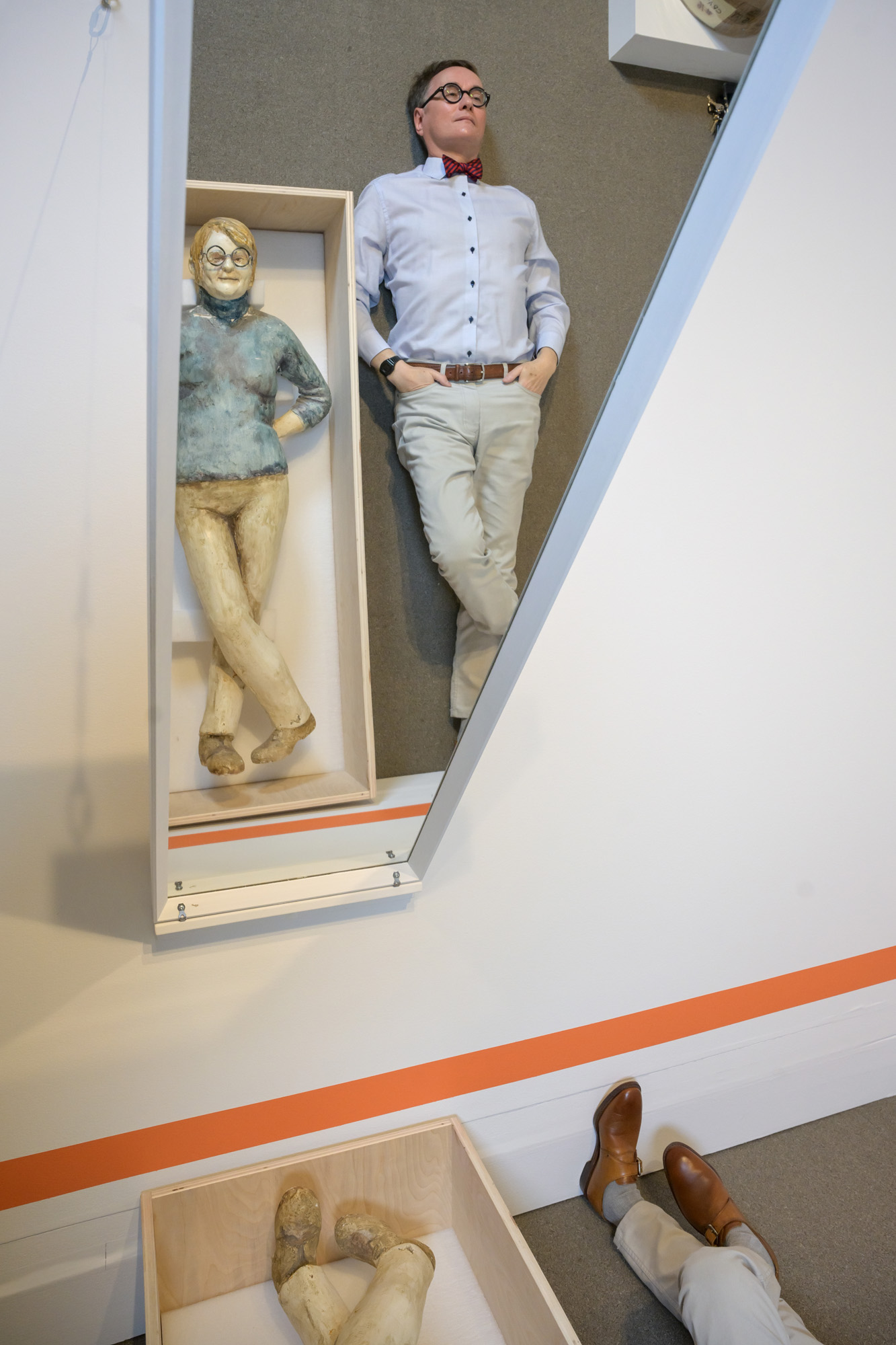
Timothy Long in repose next to a sculpture of Maija Bismanis by Joe Fafard.
His most influential professor, however, was Bismanis. In Whispers from the Vault, her portrait is installed in an unorthodox way, "which is fitting, because she was an unorthodox professor," Long explains. She provided one-on-one instruction and mentorship, always thrusting books at him on a wide range of topics, including Frankfurt School aesthetic theory. "My mind was always trying to absorb what she was teaching," he says. In the exhibition, the 50 per cent-sized sculpture of Bismanis is displayed in a crate on the ground, with a mirror hung above it at an angle, "so you can see her standing, floating in the mirror as you go into the gallery." While this approach was a practical one-the sculpture is damaged and couldn't be displayed upright-it was also metaphorical. "I always saw Maija as my Athena. Whenever Odysseus is in need of direction, Athena appears out of the mist and shows the way," he explains. After all, it was Bismanis who advised Long "in the nicest way" that he was not an artist and his abilities were more suited to art history. After earning two undergraduate degrees in visual art and a Bachelor of Arts honours in art history at the U of R, Long applied to one graduate school-Stony Brook University in New York-because that's where Bismanis told him to go. Once he acquired a master's degree in art history and criticism from there, Long returned home to another recommendation from Bismanis that would shape his entire career: to apply for a curatorial assistant opening at the MacKenzie Art Gallery. "And here I am 35 years later. Now she's saying, 'Tim it's time to retire.'"
During his time at the MacKenzie, Long's sense of who he is and where he comes from as a settler curator on Treaty Four Territory was profoundly shaped by his experience of working under Lee-Ann Martin, the first Indigenous head curator of a mainstream art gallery in Canada, and then serving as the supervisor of gallery curators Patricia Deadman, Michelle LaVallee, and Felicia Gay. "I learned from them the importance of building trust, making space for voices that haven't been heard, and working together as an act of reconciliation," Long says. "Seeing Michelle move from a junior curator at the MacKenzie to a senior position at the National Gallery of Canada has been particularly gratifying."
In fact, throughout his career, Long took the lead from his mentors and worked to inspire the next generation of curators, himself. Independent curator and researcher Julia Krueger met Long when she was doing her master's degree at Carleton University and working at the Canada Council Art Bank. Long was curating the Regina Clay: Worlds in the Making exhibition and went to the Art Bank to view some artwork. "He was open, and talked to me, this lowly student," Krueger says. She later called him up and asked to interview him for her master's thesis. Although he was incredibly busy preparing for the exhibition, "he gave me a great interview; he was generous with his time," she says. To Krueger's surprise, he then asked her to write an essay for the Regina Clay exhibition catalogue, kickstarting her own career. "There are three people in this world I consider my mentors, and Timothy's one of them. These are people in the field who were so generous with their time when I was first starting out and have taught me over the years the equivalent or more to what I learned in university. When I work with Timothy on projects like exhibitions, it's like taking a grad course," she says.
Long and Krueger have since collaborated on two major exhibitions at the MacKenzie: Victor Cicansky: The Gardener's Universe, a retrospective of more than 100 ceramic and bronze works by that artist, and Prairie Interlace: Weaving, Modernisms, and the Expanded Frame, a groundbreaking touring exhibition co-organized with Nickle Galleries in Calgary that looks back to the explosion of innovative textile-based art on the Canadian Prairies from 1960 to 2000. Long credits the latter show as one of the high points of his career. "It was like going into a country you've never visited. I'd seen weaving in the past, but I didn't realize it was so fantastic and there were so many wild and wonderful things going on here in Saskatchewan and the other Prairie provinces. It was an absolute revelation to me," he says.
Prairie Interlace, curated by Long, Krueger, and Michele Hardy, explores the interwoven histories of feminism, craft, Indigenous art, and life on the Prairies in the last half of the 20th century. At the exhibition opening in Calgary, the curators had the opportunity to meet some of the women weavers from the 1960s and '70s whose work is featured in the show. Long talked with Alberta weaver Brenda Campbell about her piece, Woodlands Undercover, an abstracted foothills landscape. He rhapsodized about how she worked with the edges to reflect the rise of the land; how the piece was like looking in a rearview mirror in the ways it plays with silhouettes and reflections; how she broke the landscape into panels, adding coils between them to represent the power of the land embodied in the weave of vegetation and the fold of the rock. "I concluded by saying this weaving makes shaped canvasses of the 1970s look awkward and inept by comparison. She was crying. Somebody was looking at her work and seeing it," Long remembers.
Many other artists and curators have appreciated the opportunity to work with Long over the years. "Timothy loves his work. From my perspective, the exhibition, Wilf Perreault: In the Alley/dans la ruelle was a labour of love by Timothy. It was a collaborative team effort, and his leadership was amazing. His attention to detail and leadership were extraordinary, from his selection of artwork being well researched, to creating the book, working with a variety of writers, and making the film," says Regina painter Wilf Perreault.

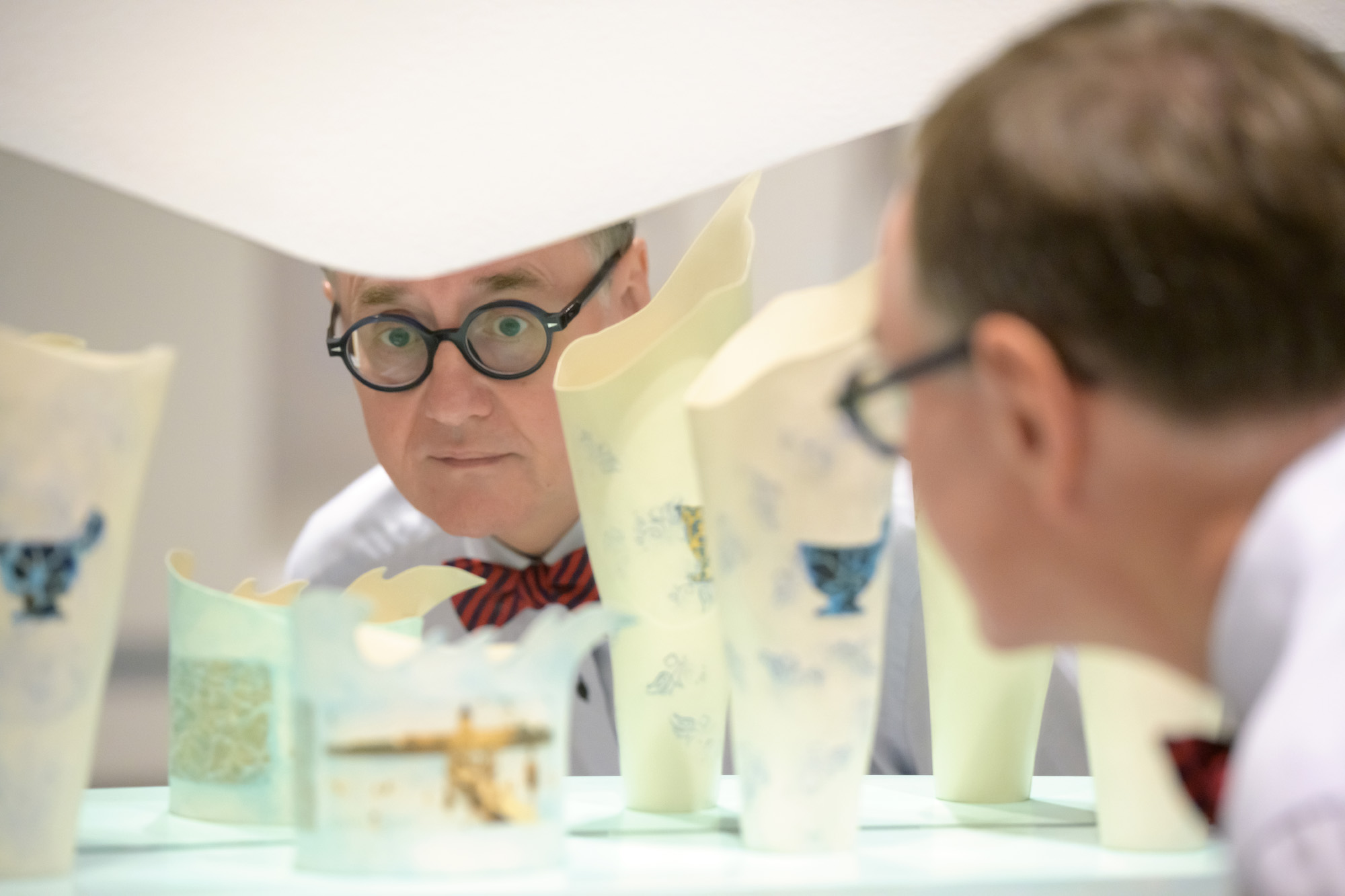
Timothy Long with artworks by ceramic artist Jeannie Mah BEd'76, BA'93.
In 2003, Long invited Regina artists to critically re-examine the city for Regina's Centenary in the exhibition, That's My Wonderful Town. Ceramic artist Jeannie Mah BEd'76, BA'93 was one of them. "I find the trust that Timothy bestows on artists to be admirable," she says. "Leading from behind, Timothy's sensitive understanding of time, place, and the artistic process developed an exhibition that spoke visually about Regina at 100 years."
Christine Sowiak of the University of Calgary is another curator mentored by Long who also collaborated with him. "He is a ferocious researcher with an encyclopedic knowledge of art history and contemporary artists, yet his work moves beyond the academic. His ability to 'read' works of art enables him to understand an artist, the ideas captured in his or her work, and what those ideas connect with in society-sharing with audiences exhibitions that connect us to the work and to this province," she says.
In an obscure essay, acclaimed author Carol Shields conjures a metaphor of the writer as a tree, their work as leaves, and the critic as "an eager young fresh-faced yard worker, intent on raking up the leaves as they fell from the tree, trying to make sense of them, hoping to arrange them in comprehensible piles."[1] Long sees the role of the curator much like that of Shields' critic/yardworker. "We're not the creators-we're not the ones breaking new ground. The artists are. I've learned profound respect for artists and the thinking they do," he says.
Long goes out of his way to connect with artists as part of his practice. "A curatorial approach that includes the artist is something Timothy has taught me," Krueger says. "Rather than, 'I'm doing a show about you', it's done together." In fact, when asked what advice he would give to up-and-coming curators, Long imparts, "listen to the artists." He also underlines the value of collaboration: "Don't be afraid to give up some control over a project if it means getting more creative input either from the artist or from your co-curators. There's a real value in an approach that doesn't put yourself at the centre, but brings in other voices and perspectives. You get the best results when you work as a team."
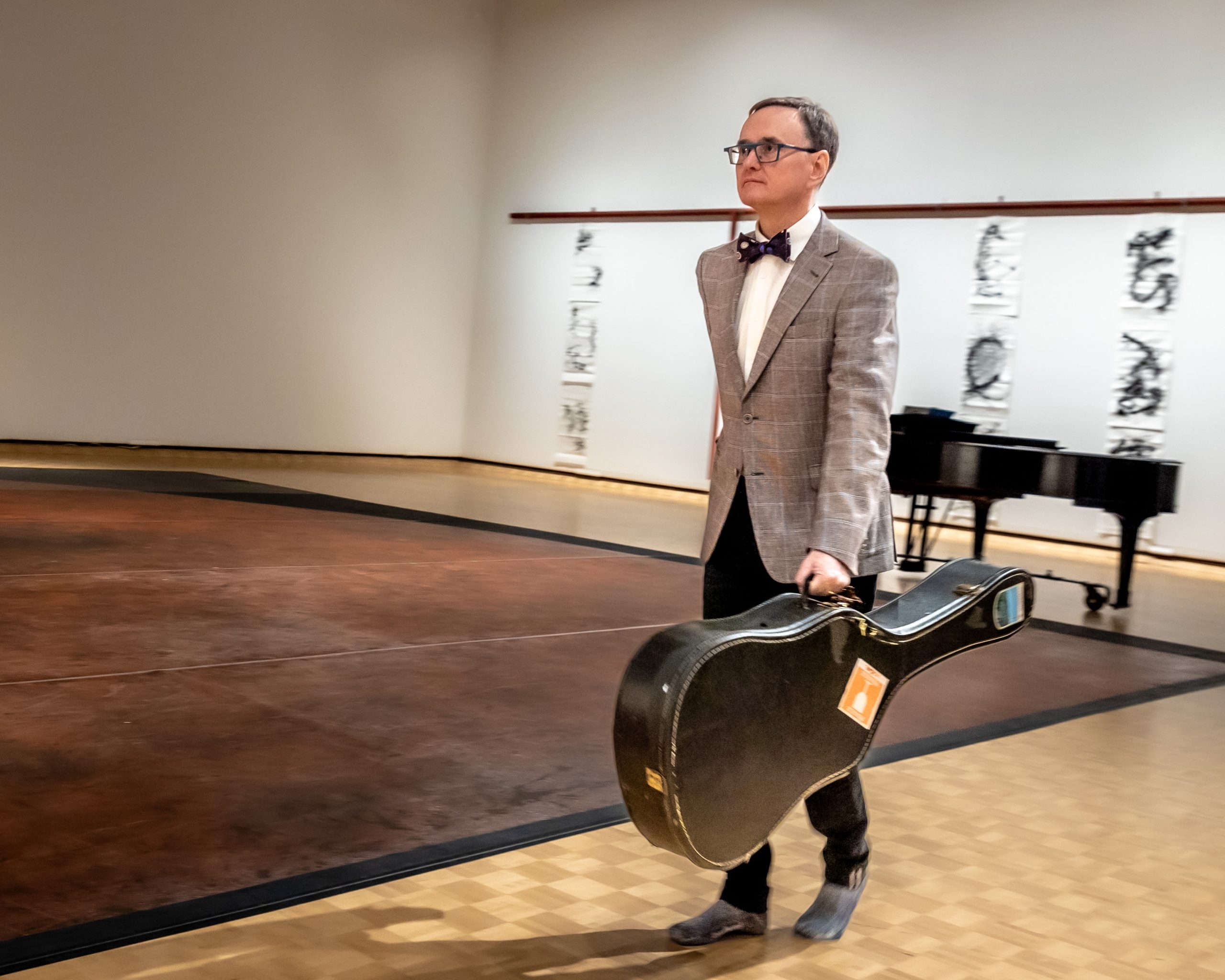
Timothy Long performing as part of MAGDANCE at the MacKenzie Art Gallery, 2023. Photo courtesy of New Dance Horizons.
A collaboration that Long considers a significant highlight of his career is one he and Robin Poitras, artistic director of New Dance Horizons, cultivated in 2011. MAGDANCE is a groundbreaking series of dance residencies/exhibitions that have broken barriers by bringing the black box of contemporary dance into the white cube of the art gallery. "We had a gap in the schedule, and Robin asked, 'Can I dance in the gallery in between shows?' I looked at her and said, 'Why don't we make your performances the show and bring the dance floor into the gallery?' When you make these decisions, you don't realize what the consequences are going to be. Sometimes you have to trust your gut. In this case, my intuition paid off," Long says. Collaborations between contemporary dance companies and art galleries are done in other parts of Canada, but not to the extent of MAGDANCE. "Dancers in Montréal say, 'Why can't we have that in Montréal?'" Long remarks. "How many things do Montréalers envy Regina for?"
Poitras points to the national and international impact of Long's commitment to dance. "Dance hasn't been documented in the same way as art because it's non-verbal. Timothy was really instrumental in building a following and helping to create a legacy and archive about dance in Canada," she says. "I was recently on a conference call with some people in Europe. One of them asked, 'Who is that curator at the MacKenzie Art Gallery who did all that dance work?' He's revered by many."
In retirement, what Long wants to do most is write. "It's a challenge when you're a working curator to find time for writing, because you're always consumed by the logistics of arranging an exhibition," he explains. "Writing is a thing you do on own time, on evenings or weekends. I'm looking forward to spending more concentrated time writing, reading, and pursuing ideas."
His legacy also continues, not only through the MacKenzie's rich permanent collection that he helped build and interpret, the many exhibition catalogues he has spearheaded, and MAGDANCE (including a website documenting the history of the project), but also through the work of the many curators he has mentored. Krueger says, "Timothy recently told me it's time for me to start mentoring others. I've taken that to heart. I'm trying to give support and help younger researchers and curators like he did for me and continues to do. I admire that he has this generous approach to supporting curators and researchers like myself and reminding me that it's my job to continue that approach."
At their final MAGDANCE collaboration together in 2023, Poitras asked Long if he would create and perform a dance piece. "He looked at me like I was crazy. I told him, 'I'm serious. You have such clear and insightful questions about dance.'"
Long took her up on her suggestion. "What he did blew us all away. It was a side of Timothy that people aren't familiar with, and it really speaks to his creativity, his integrity, his curiosity, and his commitment. He rehearsed diligently every night. He was so brave to take that on, and it was a really strong performance," says Poitras.
Long's dance was a simple one. He walked backwards from one side of the gallery to the other while carrying a guitar. At the end, he ran into the wall and looked at the T-bar support above him. "That 'T' became for me all the decision points in my life, where you make a choice, you commit to something and you don't know where it goes," he says. Then he walked back across the room-again backwards-swinging his guitar case like a pendulum, "like passing through life. You go forward through life, but you learn backwards. You have the experiences and you only understand them at the end, when you're looking back. That's what it meant to me. Also, carrying the guitar-you carry something with you through that journey."
[1] "Arriving Late: Starting Over" in How Stories Mean, ed. John Metcalf and J.E. Struthers (Erin, ON: Porcupine's Quill, 1993), 247.
Top: Timothy Long BFA'86, BAHons'86 at the exhibiton 'Whispers from the Vault', MacKenzie Art Gallery, September 2024.
All photography: Trevor Hopkin, U of R Photography, unless otherwise noted.
[post_title] => The Art of Storytelling, Mentorship, and Collaboration: Timothy Long BFA’86, BAHons’86
[post_excerpt] =>
[post_status] => publish
[comment_status] => open
[ping_status] => open
[post_password] =>
[post_name] => the-art-of-storytelling-mentorship-and-collaboration-timothy-long-bfa86-bahons86
[to_ping] =>
[pinged] =>
[post_modified] => 2025-07-09 14:46:23
[post_modified_gmt] => 2025-07-09 20:46:23
[post_content_filtered] =>
[post_parent] => 0
[guid] => https://www.degreesmagazine.ca/?p=8600
[menu_order] => 0
[post_type] => post
[post_mime_type] =>
[comment_count] => 0
[filter] => raw
)
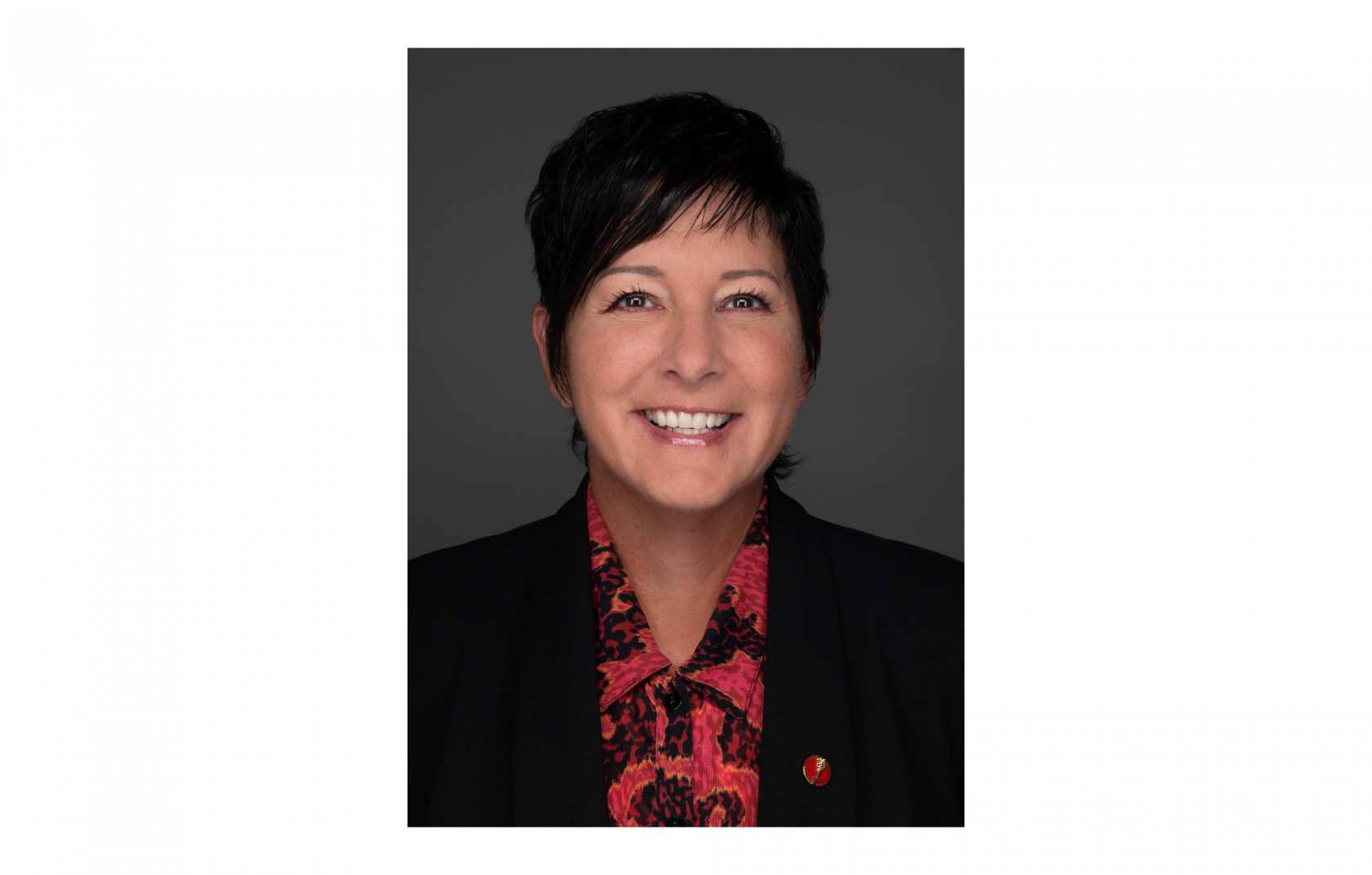



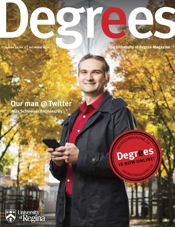


 Mike Burns BA'92. Photo: Trevor Hopkin, U of R Photography
Mike Burns BA'92. Photo: Trevor Hopkin, U of R Photography
 Alexis Losie BA'09. Photo: Trevor Hopkin, U of R Photograhy
Alexis Losie BA'09. Photo: Trevor Hopkin, U of R Photograhy
 Timothy Long in repose next to a sculpture of Maija Bismanis by Joe Fafard.
Timothy Long in repose next to a sculpture of Maija Bismanis by Joe Fafard.
 Timothy Long with artworks by ceramic artist Jeannie Mah BEd'76, BA'93.
Timothy Long with artworks by ceramic artist Jeannie Mah BEd'76, BA'93.
 Timothy Long performing as part of MAGDANCE at the MacKenzie Art Gallery, 2023. Photo courtesy of New Dance Horizons.
Timothy Long performing as part of MAGDANCE at the MacKenzie Art Gallery, 2023. Photo courtesy of New Dance Horizons.